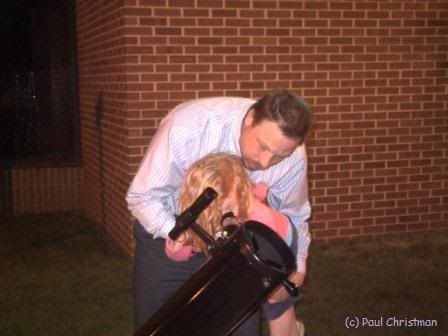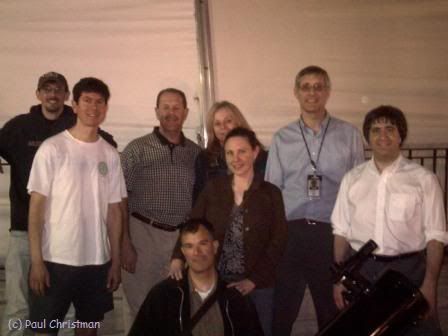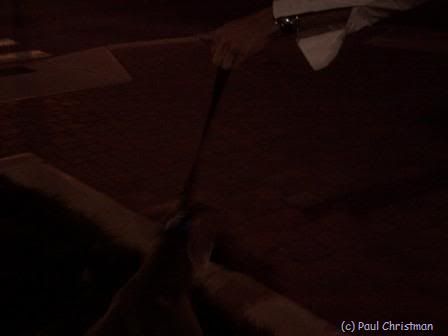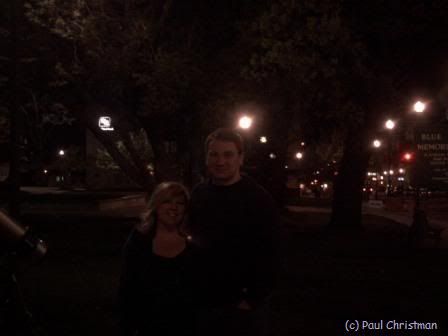
Last week I spent three evenings doing public astronomy at Westchester Public Library in Chesterton as part of Global Astronomy Month 2010’s Lunar Week. I also participated in an online lunar Observation, “Walking on the Moon,” hosted by Dr. Gianluca Masi at the Virtual Telescope Project. The Virtual Telescope is located in Ceccano, Italy, and has hosted many online events for this year’s Global Astronomy Month 2010, and last year’s International Year of Astronomy 2009. I haven’t seen them all, of course, but since I’ve been fascinated by our Moon in recent months, I didn’t want to miss this chance.
With a six hour time difference between here and Italy, the first quarter Moon was high in the sky for Dr. Masi and his Virtual Telescope audience, but it was only about an hour and a half past Moon rise here in Valparaiso (at 2:30 PM Central Daylight Savings Time). I could see the Moon out the window, and remarked in the chat room for the observation that it was incredible to be able to see it through my window in Indiana while Dr. Masi was imaging it from Italy. Of course I’m well aware of that any way, but to be able to see it nearly simultaneously from two distant vantage points was thrilling. It was a reminder to me that although we are sometimes separated by state borders and oceans, we inhabit a small globe, and that we all share nearly the same sky.
Many astronomers, and especially professionals, shun our Moon because bright Moonlight can effectively wash out faint distant objects of observing interest. With that in mind, it was nice to see that Dr. Masi would not only share the experience of observing our Moon with his many friends around the world, but did so knowledgably and passionately (he narrates his work to keep the audience informed, and monitors comments and questions from the chat room as well. Talk about multi-tasking).
Dr. Masi was excited that the sky conditions were great for lunar imaging that night (afternoon for me), and he turned out many stunning images, in much greater detail than I have ever seen. I’m getting to be a frequent lunar observer, and was well acquainted with the many regions observed, although I’ve never seen them in such detail as the Virtual Telescope delivered.
With over 2000 people joining in, all over the globe, it was the largest observation I’ve participated in. I’ve seen remote observations demonstrated by Valparaiso University’s astronomy staff, and I always enjoy peeking behind the curtain to see how professional astronomers go about their work. Thanks to my Italian friend and astronomer Dr. Gianluca Masi for allowing the world into his observatory through the Internet and sharing his observing with us.
Photo credit: Virtual Telescope Project




































